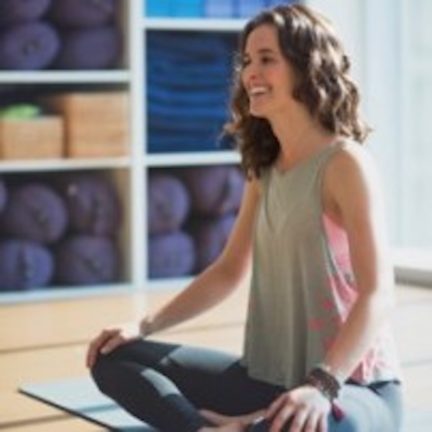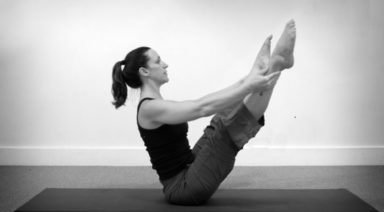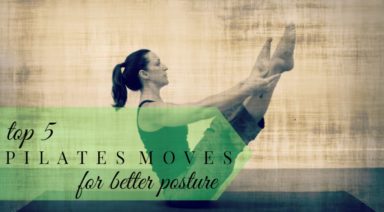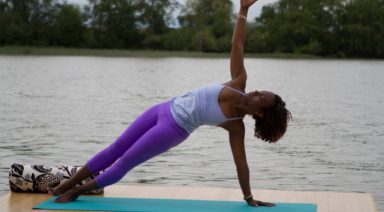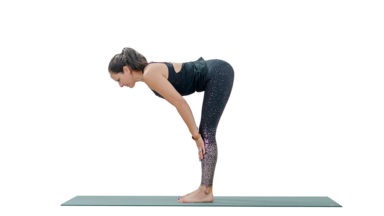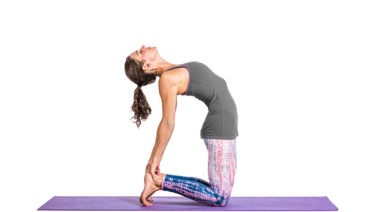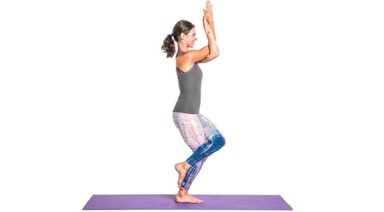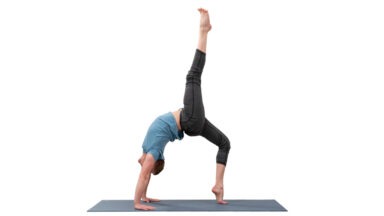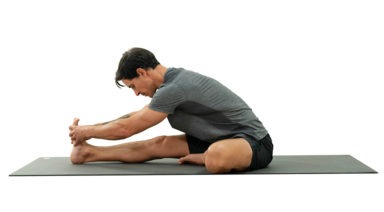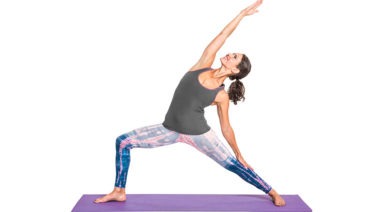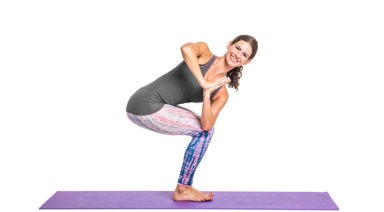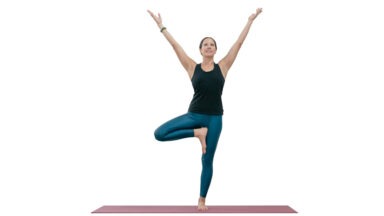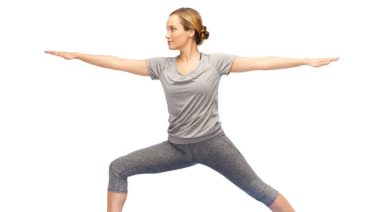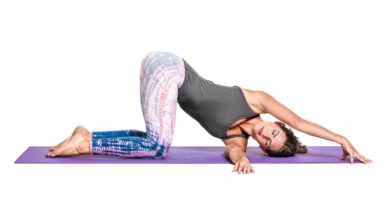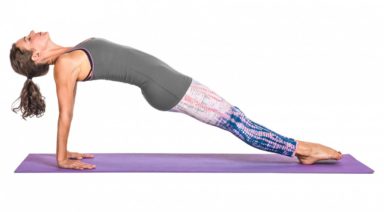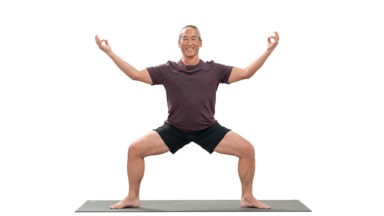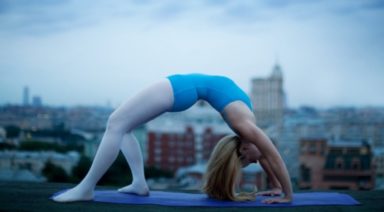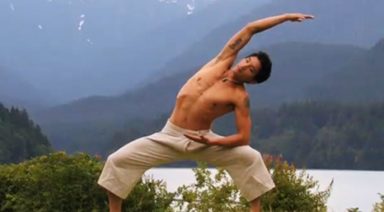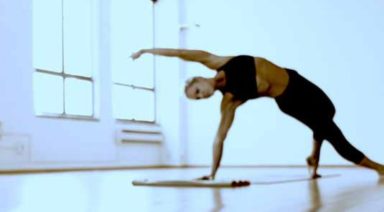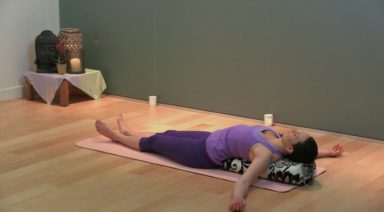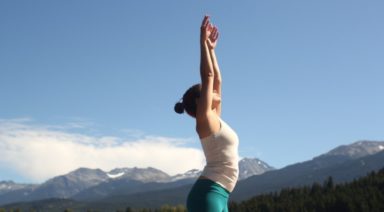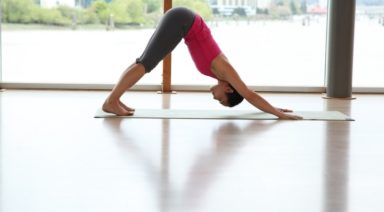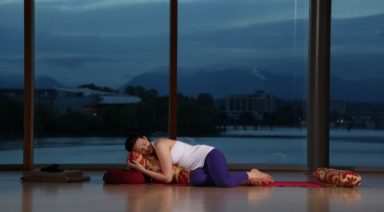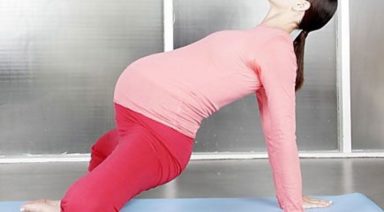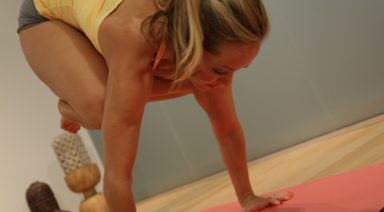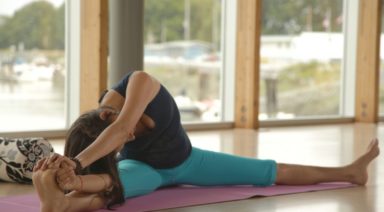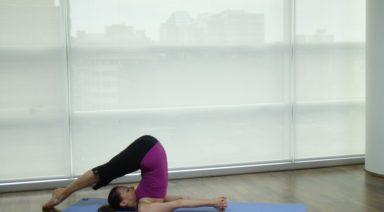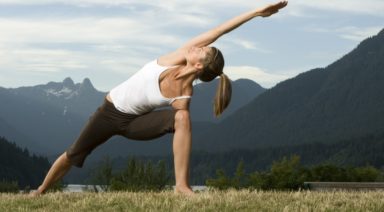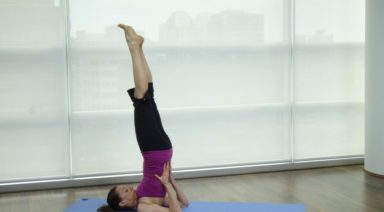Yoga Every Day: More Than A Hashtag
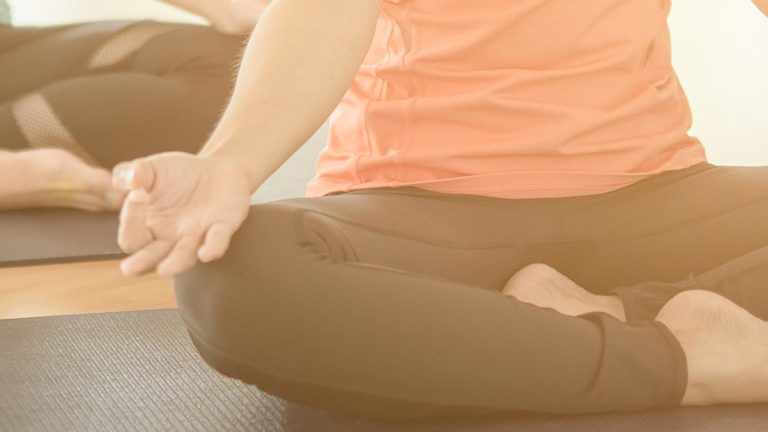
If you’re a yoga practitioner in 2016, chances are you have had some exposure to the yoga of social media. You may even be familiar with the “yoga every damn day” hashtag that unites a community of yogis in the pursuit of a devoted daily practice. But what does #yogaeverydamnday really mean and is it in the realm of wise practice? While some are quick to condemn this social media movement with cautions of injury, demands for moderation and a strict adherence to tradition, perhaps it warrants closer examination.
Maybe #yogaeverydamnday is meant to celebrate the yogic lifestyle and encourage committed daily practice. Or maybe there exists a deeper level of embedded insight in this seemingly innocuous hashtag than what can be communicated in a well-staged image or video. At the very least, it serves as an entry point for discussing how Yoga Everyday is actually a lifestyle choice.
WHAT IS YOGA EVERY DAY?
THE SPIRIT OF SADHANA: EXPERIENTIAL WISDOM
Among the numerous sacred texts that comprise the ancient body of yoga philosophy, the Yoga Sutras include some of the clearest and most readily applicable teachings for the modern yoga practitioner. There are two words in Sanskrit that are commonly translated as “practice” in English: abhyasa and Sadhana. These two words may be synonymous in their shared English equivalent, but in Sanskrit they illustrate, in two very different ways, what is meant by yoga “practice”. As we begin to examine our own personal reasons for practicing yoga every day, it is important to develop an intimate understanding of both.
THE SPIRIT OF SADHANA: ABHYASA
Abhyasa is the collective of devoted practices and lifestyle choices (thoughts, words, actions) that allow us to grow in the direction of truth and spiritual realization. Abhyasa can be thought of as a set of natural behaviors that are informed by our personal values and our deepest spiritual aims. In Yoga Sutra 1.13, we are given Abhyasa as descriptive of all practices that maintain a state of tranquility. This maintenance is achieved with a commitment to sadhana.
THE SPIRIT OF SADHANA: SADHANA
Sadhana refers to the specific methods and techniques for interacting with the physical world through the vehicle of the body. Sadhana addresses body, breath and mental awareness through prescribed practices such as those offered in Ashtanga Yoga, The Eight-Limbed Path.
WHY PRACTICE YOGA EVERY DAY?
THE SCIENCE OF SADHANA: BIGGER BRAINS
In a recent study aptly titled, Neuroprotective Effects of Yoga Practice, the brains of experienced yoga practitioners were compared to those of non-practitioners with similar health profiles. Using magnetic resonance imaging (MRI), researchers at The National Center for Complementary and Integrative Health were able to identify regions of activity and growth. As a result, this study found that:
- A regular practice combining breath awareness, physical postures and meditation can increase the volume of gray matter (brain tissue) in different parts of the brain, effectively reducing the naturally occurring, age-related decline of brain cells. With most of the observed gray matter volume changes having occurred in the left-side of the brain, the implication is that yoga shifts the automatic response of the practitioner from fight-or-flight (right-brain, sympathetic nervous system activation resulting in acute physical stress) to rest-and-digest (left-brain, parasympathetic nervous system activation promoting calm and relaxation)
- The areas of the brain indicating the greatest change in gray matter were those directly related to sense of self, attention, spatial/sensory awareness as well as stress reduction. These findings provide a potential neural basis for the benefits of practicing yoga. The observed benefits were greater in those who practiced more often over a longer period of time supporting the notion that a consistent practice of yoga every day is more effective than an intermittent one
THE SCIENCE OF SADHANA: POSITIVE GENE EXPRESSION
Yogic texts have long since shared the promise of changes that can occur on the subtlest levels of being with practice. In B.K.S. Iyengar’s “Light on Yoga”, for example, we’re offered a myriad of physiological benefits with each individual pose. In 2013, studies at the University of Oslo offered a unique look inside the cellular structures of the human body to provide real, measurable data on what actually happens to cells when we practice yoga.
The Norwegian research team discovered that various yoga practices immediately impacted the expression of 111 genes, increasing the function of some while decreasing the function of others.
A similar study conducted at Harvard Medical School concluded that, “practitioners upregulate genes associated with energy metabolism, mitochondrial function, insulin secretion and telomere maintenance while downregulating genes linked to inflammatory response and stress-related pathways.”
In effect, yoga changes the way our genes express themselves in order to achieve optimal health.
THE SCIENCE OF SADHANA: INCREASED INTEROCEPTIVE AWARENESS
As yoga practitioners, we intuitively know that some good can come from intentionally focusing attention Inward. We regularly “watch” the breath from the inside out and concentrate on specific areas like the Spine or the Hips. After enough time, we come to trust the benefit of this type of attention based on experiential proof and as we revisit this behavior again and again, we call it practice.
This shift of attention inward helps us maintain composure under stress by instinctively deepening the breath and it allows us to identify ailments before they become serious with heightened body awareness. Many of you, myself included, may have long ago stopped asking why yoga works, but in case you are still wondering, Norman Farb from the University of Toronto has one possible answer.
In his 2012 study on interoceptive and exteroceptive attention, Farb discovered key differences in the location of brain activity resulting from directed attention, either inward or outward. To understand why this is important, it helps to know that as babies, humans focus most of their attention internally; everything about the information received from their bodies is new and they have no qualms about devoting large amounts of concentration there.
As humans mature however, we are conditioned to favor external information and stimuli. We are taught in school to pay attention to the teacher, the board, the book. Aside from the utilitarian tasks associated with personal hygiene, we are seldom encouraged to pay much attention to our bodies from the inside. We develop a sense of self that is largely defined by external information and we generally identify with our internal experience only when something is wrong.
What Farb encountered in his study was that when participants focused on an external screen (exteroceptive attention), the primary brain activity occurred in the neocortex, the most recent evolution in the human brain which differentiates us from other species and processes sensory information predominantly from external input. On the other hand, when participants were instructed to observe their breath (interoceptive attention), brain activity was heightened in the areas of the brain that bridge the cortex and the limbic system which is much older in terms of evolution, governing basic instincts and primal emotions.
According research scientist, Emma Seppala, whose expertise is social connectedness and meditation-based interventions, this shift from exteroceptive to interoceptive attention may be “directly tapping into bodily awareness that is free from social judgment or conceptual self-evaluation.” Now this starts to sound like yoga! We can’t change our internal experience with external attention. It follows that when practiced over time, yogic practices such as asana, Pranayama and Meditation strengthen our capacity for interoceptive attention, meaning that we live in a more deeply connected way with the Self.
CHOICE OUTRANKS HABIT
According to Wendy Wood, psychology professor at the University of Southern California, habits are formed when a repeated, goal-driven behavior becomes a contextual reaction to a specific trigger and yields an automatic response. Before a habit is formed, the area of the brain required to perform a particular action activates working memory and allows for the ability to make decisions. After a number of repetitions, the action no longer uses the same area of the brain.
Instead, the goal-related information is released and we enter a sensory-motor cycle that leaves the conscious mind out of the picture. Basically, when we deny ourselves the freedom of choice in our actions, what we’re left with is habit. Mindless, unconscious, pattern-laden habit. In the context of yoga every day, we must exercise our conscious choice show up for whatever the practice looks like on a particular day. Whether we believe it or not, the Power Of Choice is always stronger than the force of habit.
Even good habits can be troublesome because they remove us from the present and disconnect us from consciousness by soliciting an automated response. However, in developing a consistent practice, Wendy Wood’s approach to building new habits does have some merit. At The American Psychological Association’s 122nd Annual Convention, she presented the following three principles for habit formation, offered here with a yogic trimurti twist.
DISSOLUTION
This is the power of Shiva to destroy and transform any pattern or behavior that is no longer serving our highest spiritual aims. Take a moment to reflect on what has kept you from practicing yoga every day in the past. For example, do you run out of hours in the day? If so, make the change to morning practice by waking up early or shorten the time expectation.
REPETITION
This is the power of Vishnu, the sustainer of order and truth. Establishing continuity can make yoga more enjoyable because each practice builds on the one before. You will inevitably develop greater strength and mobility while experiencing deeper levels of clarity and relaxation. Plus, when you know you will have another opportunity tomorrow, there’s less pressure imposed on each instance of practice.
CREATION
This is the power of Brahma, creator of all things. By harnessing the freedom of choice and awakening creative power, we can establish new neural pathways through practice that free us from conditioned patterns of behavior. Wood advises the implementation of new triggers or cues that elicit the desired behavior. For example, a simple Ritual that initiates the sequence of practice can be all you need to get started, you might apply essential oils or light a candle. You may even just unroll your mat or sit on your meditation cushion and see what unfolds.
HOW TO PRACTICE YOGA EVERY DAY
THE STRUCTURE OF SADHANA: LIVING YOGA
One common misconception about yoga is that practice begins and ends with asana. Yes, the postural practice serves a very important purpose, as B.K.S. Iyengar confirms in “Light On Life”, there is no substitute for sweat. But as he also teaches, “penetration of mind is our goal.” In other words, Asana is not the point, it is the path.
If we can remain open to the broader offering of yoga as a lifestyle, we begin to see that it shows up everywhere and looks different from one day to the next.
Sometimes yoga is sweaty and long and intense. Other times, it is subtle, like the generosity to let someone cut in traffic or being patient with our loved ones. It is this mode of living yoga, finding union in our thoughts, words, and actions that provides consistency in practice, which Judith Lasater says, “is the highest form of discipline”. Whereas, if we were to adhere to a strict regimen of asana 90 minutes a day, 7 days a week, but found that we were no kinder, gentler or more peaceful, then we wouldn’t be in the practice of yoga. Instead, it is better to practice your yoga, your way, every day.
THE STRUCTURE OF SADHANA: A LITTLE YOGA IS BETTER THAN NO YOGA
When the prescriptive practices outlined in the Yoga Sutras were written, they were intended for renunciants who devoted their lives to spiritual practice by abandoning all worldly interactions. Today’s yoga however, particularly in the west, is practiced by householders whose spiritual practice is woven into a much more complex daily life, loaded with responsibilities and relationships. What this means for a devoted daily practice is, sometimes a little yoga every day is better than none at all.
THE STRUCTURE OF SADHANA: CHOOSE YOUR LEVEL OF PRACTICE
Patanjali indirectly addresses yoga practice for householders in the Yoga Sutras by describing various levels of practice and emphasizing conviction over intensity. In Yoga Sutra 1.20, Patanjali describes how those practicing with great vigor and firm conviction achieve the fruits of their labor more quickly than those with lesser conviction. In Swami Jnaneshvara’s discussion of this sutra he explains that a person with a busy schedule, lacking ample time for practice can still engage in moderate effort (in length or intensity) while maintaining strong conviction. This approach prevails over an irregular, less devoted practice having greater intensity or length of time.
THE STRUCTURE OF SADHANA: BEING AND BECOMING
Daily practice is an ever-evolving cycle of being and becoming. In Yoga Sutra 2.31, Patanjali illustrates the ultimate progression along the spiritual path as the point at which daily sadhana becomes a great vow. He adds that this great vow can only be observed by one who practices universally in relation to all beings of all forms, equally in all places or spaces, continuously in all times, and uniformly among all circumstances or situations.
Again, referring to Swami Jnaneshvara’s translation, he extracts from this sutra that we must all must start where we are and commit to what is possible in our practice right now. Let the practice Ebb And Flow with the tide of your daily life, but stay true in the unwavering commitment of yoga every day. This is what is meant by a “great vow”. With consistency and devotion, as we awaken deeper levels of awareness, the above conditions are met and what we cultivate in sadhana becomes our natural state of being.
SAY YES TO YOGA EVERY DAY
From neuroscience to somatics, we are in the midst of a burgeoning curiosity about human experience and consciousness that has inspired the application of modern methods of observation, measurement, and analysis to substantiate the positive effects of daily yoga practice. As research catches up with the sages, this systematic scientific inquiry has, in many cases, confirmed the poetry of ancient wisdom and sacred texts. Common to both the science and the spirit of sadhana, we find the benefits of yoga every day are undeniable.
Redefining the Core

A woman referred by a yoga colleague came to me for an Alexander Technique lesson, hoping to relieve her agonizing neck and shoulder pain. I began by explaining Alexander’s central concept: release your neck to free the spine and relieve the shoulders. Then I stepped back to consider her overall stance. Though she had what might be considered “good” posture, I noticed a strange contraction in the front of her torso.
“What are you doing with your abdominals?” I asked.
“Holding them,” she replied.
“Well,” I said, “let them go.”
She did. Her torso did not collapse without that alleged “support.” After her first and, as it turned out, only lesson, her acute shoulder pain disappeared. What does this show? 1) A symptom may be far from its cause and 2) a flawed concept of abdominal support can be damaging.
Such a quick resolution is rare. Usually, in a private Alexander session or yoga class, we are on a quest to change neuromuscular habits bit by bit, refining awareness, unraveling tension and marshaling the body’s inherent postural support.
Many students pat themselves just above the navel and say, “I’ve got to strengthen my core,” with a vague idea of what that means. There are legions in the fields of physical conditioning and performance who will tell you that maintaining a conscious contraction in the superficial abdominals – those we can see and feel – will resolve back pain, foster better balance and improve posture. But misusing abdominal muscles can actually compress the spine and increase back pain, send you off balance, restrict your breath and compress your posture. In a class or private lesson, I have used the same instruction – let your abdominals go – to help people resolve sciatica, improve their singing, free their hip joints and restore full breathing. I don’t mean a slump or a droop, but the dynamic lengthening that comes from marshaling oppositional forces throughout the whole body.
Let’s correct some prevalent misconceptions and expand our idea of what core support really is.
Don’t Hold Anything
You wouldn’t strengthen your biceps by holding them in contraction all the time, so why do that with your abs? No muscle group should be held.
Muscles work reciprocally, and abdominal muscles work in relation to the head, neck, back and legs. As you walk, your abdominals – which connect from the pelvis to the lower ribs – work automatically. It may take some enlightened instruction to get there, but when you let your abdominals release and you envision ease and length in your spine, your abs work as they should.
The body is a marvelously complex creation – easy to move, hard to understand. Our body’s real function is a dazzling interplay of forces. As we try to sort out how it works, it’s easy to over-simplify. People try to stabilize one area rather than coordinate the entire body in motion. But a little anatomical understanding and some guiding principles can help you access your torso’s genuine support and truly enliven your core.
Abdominal Muscles
There are four layers of abdominals:
- Rectus abdominis are straight up and down, easily felt on the front surface of the torso. The goal of crunches is to develop these into “washboard abs.” Washboards – not much in use these days – are made of metal, a hard substance unlike human tissue. I’m all for strong abdominals, but they can be strong without being hard.
- Oblique abdominals are slanted and come in two layers – internal and external. They work when you do a yoga twist, when you breathe and as you walk. They wrap around your torso and go almost all the way back to the spine.
- Transversus abdominis is the deepest of the four layers, wrapping all the way around the torso, connecting to the lower spine. Roughly horizontal, transversus helps contain the internal organs and participate in upright posture.
Core Is So Much More
Let’s keep going, to underlayers you can’t consciously feel or directly engage, deeper within the body.
- Diaphragm – This mushroom-shaped structure at the bottom of the rib cage is the primary muscle of respiration. It coordinates with other torso muscles to expel CO2 – the waste product of breath – and inhale O2, the oxygen we need for survival. You can’t get more “core” than this. The entire rib cage expands as we inhale and contracts as we exhale. Allowing your breath to work fully and easily supports upright posture, calms the mind and conditions torso muscles – subtly and without effort.
- Psoas – You’ll hear this word thrown around a lot in yoga classes as a problem area. Some – not all – anatomy geeks consider this part of your core. Psoas expert Liz Koch calls her work Core Awareness. The full name is iliopsoas. Toward the top, it connects to the diaphragm and lumbar spine, relates to each breath we take and helps support upright posture. The “ilio” part coats the inside of the pelvis. The “psoas” part loops under the thighbone and, when it contracts, bends the hip joint. It is so central, so deep, that some consider it a barometer of our emotional state and level of stress.
- Pelvic floor – This web of muscle at the bottom of the torso helps support the internal organs. A busy intersection devoted to elimination and sexual activity, it connects to fascia in the body’s front and back that indirectly link all the way up to the base of the skull.
- Multifidus – Some back muscles – the ones you use when you arch your back in yoga – are on the torso’s surface. When they engage, they extend the whole length of the spine. Beneath those big surface muscles are intermediate layers and, deepest and closest to the spine are these little ones: multifidus, linking one vertebrae to another. They support us to stand, sit well and initiate larger movements. Studies show that to protect the spine from injury, the multifidus muscles activate before any motion.
The Body Works as a Whole
When you bend your elbow, your biceps work and your triceps release. When you straighten your arm, the triceps engage. If both are working, your shoulder and elbow joints will compress. When muscular work is efficient, one muscle group is active and the opposing group releases. That release is a neuromuscular function called inhibition. We can make that function conscious by pausing before we do a yoga posture to envision the posture as a whole and move into it with ease.
When you learned how to throw a ball or swing a racket, you didn’t analyze a sequence of muscles engaging. You looked where you wanted the ball to go and imitated your teacher, an athlete or adept older kid. You got a whole picture. Your eyes delivered that picture to your brain and nervous system in a flash, and you did your best to fulfill the action you saw. Over time, you practiced and got better at it, not from analysis, but from keeping your eye on the ball and repeating a whole body experience. When we see the objective of an action in the mind’s eye, we are better able to engage the body’s complex, integrated response.
Many people think that surface muscles – the back and superficial abdominals – support upright posture. It’s nice to know where the abs are and what they do, but here’s the big news: if the outside shell of muscle is tense, the inner muscles fail to engage. Rather than working, the core muscles actually inhibit, making the spine less spacious and more vulnerable. Before we do something, the spine can enliven and lengthen to prepare for our next move. When you understand this, it can bring more ease and balance to your daily tasks and to the practice of yoga.
Ways to Build the Core
Here are some ways in everyday movement and yoga to build a truly strong core:
- Standing – Whether waiting for a train or standing in tadasana, Mountain Pose, notice whether your weight is more toward the front of your feet or the heel. If you’re not centered, envision the top of your head guiding you right over your feet. If it feels weird, you’ll know you habitually stand back on your heels. Once you’re in balance, central muscles naturally engage and upright poise can become effortless.
- Sitting – To sit well, envision space and ease where the spine joins the head – a point between the ears. Balance your weight on your sitbones, breathe easily and envision those little muscles along the spine supporting you from within. If in yoga class you find it a strain to sit with legs crossed, sit on a folded blanket or bolster to make upright posture easier. Rather than lifting your rib cage, let it be buoyant with breath.
- Breathing – Believe it or not, a full easy breath is one of the most accessible ways to improve your posture and engage your core. Your lungs go from your shoulders to near the bottom of the rib cage. Allow your breath to fill the whole torso, including the back where you have more lung tissue.
Many yoga poses demand and can inspire core support. Here are just a few:
- Seated Spinal Twist – Allow your breath to support the easy movement of your rib cage and shoulders as you wring out the waist.
- Plank – When you do this pose in yoga class or at the gym, allow your head to rotate slightly at the top of your spine. That will allow the spine to lengthen and give this strong pose a foundation of ease. Your core – you can’t do this pose without it – will engage as needed.
- Side Plank – In Vasistasana, allow that slight rotation as you send the crown of the head away from the heels of your flexed feet.
Practice either of these plank variations as you hold a block between your thighs to spark deep, genuine core support.
We’re not like an ice cream sandwich, with a slab of muscle on the front facing another slab on the back. We are round and multi-layered, with the largest muscles on the outside and the smallest deep within. Isolating and overworking one surface muscle group is misguided. It’s not how movement and function work. In fact, one part of engaging the core is breathing fully and easily. You can think of your core as beginning from the long arch in your feet, your inner heels and big toes, and ending at the top of your head.
And please, don’t hold your abdominals. Remember that your body is supported by a complicated, orchestral set of interactions that harmonize when you envision your body working – as a whole. Enjoy your new core.

